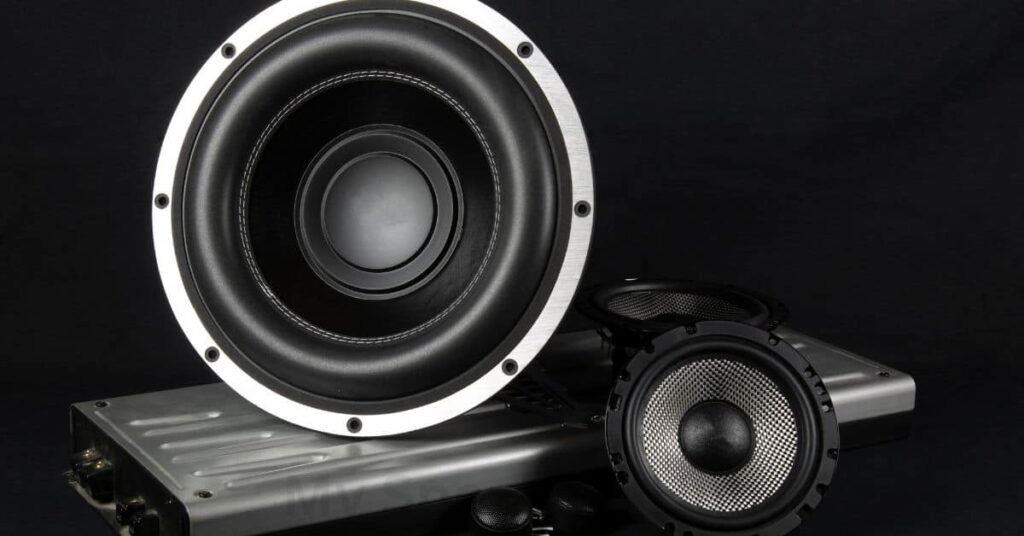Testing a subwoofer is an important step in setting up a high-quality home audio system. Subwoofers are designed to produce low-frequency sound waves that can add a significant level of depth and bass to your audio output. With the right testing equipment and a few simple steps, you can make sure your subwoofer is functioning properly and producing the best possible sound quality.
Different Types of Subwoofer Tests and How to Perform Them
A subwoofer test is an important part of setting up a home theater system. Subwoofers are designed to provide deep bass notes for movies, music and other audio sources. Subwoofer testing helps to ensure that the subwoofer is performing correctly and producing accurate sound. There are several different types of subwoofer tests that can be performed.
The most basic test is a frequency response test. This test measures the subwoofer’s ability to reproduce different frequencies. To perform a frequency response test, the user should connect the subwoofer to an audio system and play a series of tones at different frequencies. The user should then observe the output of the subwoofer to ensure that it is producing accurate sound at all frequencies.
Another type of subwoofer test is a distortion test. This test measures the amount of distortion that the subwoofer produces when playing a sound at a given volume. To perform this test, the user should connect the subwoofer to an audio system and play a sound at a given volume. The user should then observe the output of the subwoofer to ensure that it is producing accurate sound with minimal distortion.
Tips to Get the Most Out of Your Subwoofer Tests
- Start with a good quality subwoofer. Quality subwoofers will provide more accurate and reliable results than cheaper models. Invest in a good subwoofer that has been tested and proven to produce accurate bass frequencies. Additionally, make sure the subwoofer is properly powered and calibrated to your system.
- Consider the room size and layout. The size and shape of the room can affect the accuracy of your subwoofer tests. Make sure that there is enough clearance for the subwoofer to produce its full range of sound. Additionally, consider soundproofing the room to minimize sound reflections and outside noise.
- Utilize test tones and sweeps. Test tones and sweeps are available from many sources and can help you identify certain frequencies and assess the accuracy of your subwoofer. Make sure to use test tones that are within the frequency range of your subwoofer to get the most accurate results.
- Use a frequency analyzer. Frequency analyzers are available from many sources and can provide you with an accurate reading of the frequencies your system is producing. Make sure to use an analyzer that is set to the same level as the test tones and sweeps you are using.
- Take notes and track your results. Taking notes and tracking your results can help you identify areas that need improvement or areas that are performing well. Additionally, tracking your results can help you identify trends over time.
How to Fix Issues Discovered During Subwoofer Testing
The first step in fixing any issues discovered during subwoofer testing is to identify the cause of the problem. Depending on the issue, this may involve inspecting the subwoofer and its components, checking its electrical connections, or running diagnostic tests. If a faulty component is identified, it should be replaced or repaired. If the issue is due to incorrect wiring or other electrical problems, these should be corrected.
Once the cause of the problem is known, the next step is to address the issue. This may involve replacing the faulty components, making adjustments to the amplifier settings, or making changes to the room acoustics. In some cases, it may be necessary to adjust the crossover frequency or gain of the subwoofer.

In addition to addressing the issue, it is important to make any necessary changes to the overall system setup. This includes ensuring that the subwoofer is correctly matched to the main speakers, that the amplifier is correctly tuned, and that the signal path is optimized.
Finally, after making any necessary adjustments, the subwoofer should be tested again. This is done by playing a wide range of audio material and listening for any changes in the sound. If the issue has been resolved, the subwoofer can be considered fixed. If not, further troubleshooting may be necessary.
Summary of Subwoofer Testing and Its Benefits
Subwoofer testing is the process of evaluating the performance of a subwoofer by measuring its frequency response, power output, distortion, and other parameters. It is an important part of audio engineering and helps to ensure that the subwoofer is producing the best possible sound.
The benefits of subwoofer testing are numerous. It can help designers to create systems that are tailored to the user’s specific needs. It can also help to identify and correct issues that may be causing distortion or other problems. Furthermore, it can help to identify and address audio-related issues that may be caused by faulty or outdated components.
Subwoofer testing can also be used to compare different subs and determine which one will produce the best sound. This is especially useful if the user is trying to find the best subwoofer for their car audio system. Subwoofer testing can also be used to identify and correct issues with the subwoofer’s amplifier or other components.
Finally, subwoofer testing can be used to optimize the overall sound system. By measuring the performance of the subwoofer and other components, the user can make adjustments to ensure that the system is producing the best possible sound. This can be especially beneficial for those who want to maximize the performance of their audio system.
Frequently Asked Questions [FAQs]
What tools do I need to test a subwoofer?
The basic tools you will need to test a subwoofer include an audio source (such as a CD player or an iPod), a power amplifier, an oscilloscope, and a frequency generator. You will also need a microphone and a test tone, or a frequency sweep, to generate a signal.
How do I connect the subwoofer to the amplifier?
You will need to connect the subwoofer to the amplifier using the appropriate cables. The cables should be of the same type and should be connected to the proper input and output jacks on the amplifier. The subwoofer should also be connected to the power source.
How do I adjust the settings on the amplifier?
The settings on the amplifier will depend on the type of subwoofer you are using and the type of sound you want to achieve. Generally, you should adjust the gain and crossover settings to the appropriate level for the subwoofer.
How do I use the oscilloscope and frequency generator to test the subwoofer?
The oscilloscope is used to measure the frequency response of the subwoofer. The frequency generator is used to generate a signal that will be used to test the subwoofer response. The signal should be adjusted so that the amplitude of the signal is equal to the subwoofer’s maximum power output.
How do I measure the subwoofer’s performance?
You can measure the subwoofer’s performance by measuring its frequency response. This can be done by connecting the subwoofer to the frequency generator and then measuring the signal with the oscilloscope. You can also measure the subwoofer’s distortion level by playing a signal of known level through the subwoofer and then measuring the signal with the oscilloscope.
What should I look for when testing the subwoofer?
When testing the subwoofer, you should look for any signs of distortion, unwanted noises, and any other anomalies. Generally, a good subwoofer should have a flat frequency response and minimal distortion levels.
How can I make sure my subwoofer is working properly?
You can make sure your subwoofer is working properly by running a test tone through it at different frequencies and measuring the signal with the oscilloscope. You should also make sure the subwoofer is connected properly and the amplifier settings are adjusted correctly.
Conclusion
In conclusion, testing a subwoofer is an important step in making sure your sound system is working properly and giving you the desired sound. With the right tools, testing a subwoofer should be a straightforward process. Make sure to keep an eye on the subwoofer’s power levels, adjust the crossover frequency, and test it with a variety of music for the best results.


